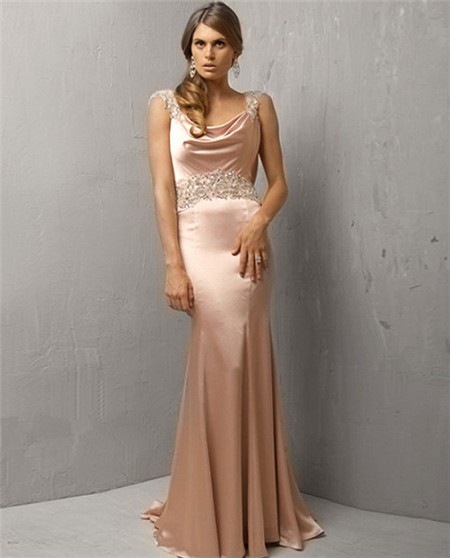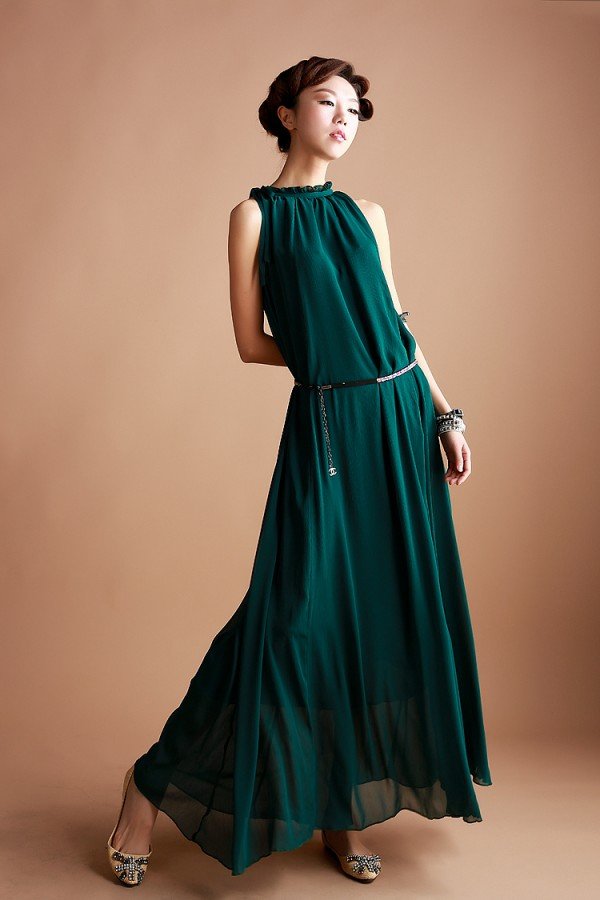Long Silk Dresses Biography
Source(google.com.pk)
The ?o dài also known as long dress is a Vietnamese national costume, now most commonly worn by women. In its current form, it is a tight-fitting silk tunic worn over pants. The word is pronounced in the North and in the South. ?o classifies the item as a piece of clothing on the upper part of the body. Dài means "long"
The word "ao dai" was originally applied to the outfit worn at the court of the Nguy?n Lords at Hu? in the 18th century. This outfit evolved into the ?o ng? thân, a five-paneled aristocratic gown worn in the 19th and early 20th centuries. Inspired by Paris fashions, Nguy?n C?t T??ng and other artists associated with Hanoi University redesigned the ng? thân as a modern dress in the 1920s and 1930s. The updated look was promoted by the artists and magazines of T? L?c v?n ?oàn (Self-Reliant Literary Group) as a national costume for the modern era. In the 1950s, Saigon designers tightened the fit to produce the version worn by Vietnamese women today. The dress was extremely popular in South Vietnam in the 1960s and early 1970s. On T?t and other occasions, Vietnamese men may wear an ?o g?m (brocade robe), a version of the ao dai made of thicker fabric.
Academic commentary on the ao dai emphasizes the way the dress ties feminine beauty to Vietnamese nationalism, especially in the form of "Miss Ao Dai" pageants, popular both among overseas Vietnamese and in Vietnam itself.[4] "Ao dai" is one of the few Vietnamese words that appear in English-language dictionaries.
History: For centuries, peasant women typically wore a halter top (y?m) underneath a blouse or overcoat, alongside a skirt (v?y). Influenced by the fashions of China's imperial court, aristocrats favored less revealing clothes. In 1744, Lord Nguy?n Ph?c Kho?t of Hu? decreed that both men and women at his court wear trousers and a gown with buttons down the front. Writer Lê Qu? ?ôn described the newfangled outfit as an ?o dài (long garment). The members of the southern court were thus distinguished from the courtiers of the Tr?nh Lords in Hanoi, who wore cross-collared tunics and long skirts.
19th century: The ?o t? thân, a traditional four-paneled gown, evolved into the five-paneled ?o ng? thân in the early 19th century. Ng? is Sino-Vietnamese for "five." It refers not only to the number of panels, but also to the five elements in oriental cosmology. The ?o ng? thân had a loose fit and sometimes had wide sleeves. Wearers could display their prosperity by putting on multiple layers of fabric, which at that time was costly. Despite Vietnam's tropical climate, northern aristocrats were known to wear three to five layers. The ?o ng? thân had two flaps sewn together in the back, two flaps sewn together in the front, and a "baby flap" hidden underneath the main front flap. The gown appeared to have two-flaps with slits on both sides, features preserved in the later ao dai. Compared to a modern ao dai, the front and back flaps were much broader and the fit looser. It had a high collar and was buttoned in the same fashion as a modern ao dai. Women could wear the dress with the top few buttons undone, revealing a glimpse of their y?m underneath.
20th century: Hu?'s ??ng Kh?nh Girl's High School, which opened in 1917, was widely praised for the ao dai uniform worn by its students. The first modernized ao dai appeared at a Paris fashion show in 1921. In 1930, Hanoi artist C?t T??ng, also known as Le Mur, designed a dress inspired by the ?o ng? thân and by Paris fashions. It reached to the floor and fit the curves of the body by using darts and a nipped-in waist. When fabric became inexpensive, the rationale for multiple layers and thick flaps disappeared. Modern texile manufacture allows for wider panels, eliminating the need to sew narrow panels together. The ?o dài Le Mur, or "trendy" ao dai, created a sensation when model Nguy?n Th? H?u wore it for a feature published by the newspaper Today in January 1935. The style was promoted by the artists of T? L?c v?n ?oàn ("Self-Reliant Literary Group") as a national costume for the modern era. The painter Lê Phô introduced several popular styles of ao dai beginning in 1934. Such Westernized garments temporarily disappeared during World War II (1939–45).
Present day: No longer deemed politically controversial, ao dai fashion design is supported by the Vietnamese government. It is often called ?o dài Vi?t Nam to link it to patriotic feelings. Designer Le Si Hoang is a celebrity in Vietnam and his shop in Saigon is the place to visit for those who admire the dress. It is often called ?o dài Vi?t Nam to link it to patriotic feelings. Designer Le Si Hoang is a celebrity in Vietnam and his shop in Saigon is the place to visit for those who admire the dress. The elegant city of Hu? in the central region is known for its ao dai, n?n l? (leaf hats), and well-dressed women.
The ao dai is now standard for weddings, for celebrating T?t and for other formal occasions. A plain white ao dai is a common high school school uniform in the South. Companies often require their female staff to wear uniforms that include the ao dai, so flight attendants, receptionists, bank female staff, restaurant staff, and hotel workers in Vietnam may be seen wearing it.
The most popular style of ao dai fits tightly around the wearer's upper torso, emphasizing her bust and curves. Although the dress covers the entire body, it is thought to be provocative, especially when it is made of thin fabric. "The ao dai covers everything, but hides nothing", according to one saying. The dress must be individually fitted and usually requires several weeks for a tailor to complete. An ao dai costs about $200 in the United States and about $40 in Vietnam.
The ao dai is featured in an array of Vietnam-themed or related movies. In Good Morning, Vietnam (1987), Robin Williams's character is wowed by ao dai-clad women when he first arrives in Saigon. The 1992 films Indochine and The Lover inspired several international fashion houses to design ao dai collections. including Prada's SS08 collection and a Georgio Armani collection. In the Vietnamese film The White Silk Dress (2007), an ao dai is the sole legacy that the mother of a poverty-stricken family has to pass on to her daughters. The Hanoi City Complex, a 65-story building now under construction, will have an ao dai-inspired design.[23] Vietnamese designers created ao dai for the contestants in the Miss Universe beauty contest, which was held July 2008 in Nha Trang, Vietnam.










No comments:
Post a Comment